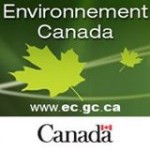 Many countries, including Canada, are required to report a national inventory of human-generated sources and sinks of greenhouse gases (GHG) every year.
Many countries, including Canada, are required to report a national inventory of human-generated sources and sinks of greenhouse gases (GHG) every year.
This system was set up to meet the reporting obligations of the United Nations Framework Convention on Climate Change (UNFCCC) and as a key tool to meet Kyoto Protocol targets and to fight climate change.
UNFCCC
The United Nations Framework Convention on Climate Change (UNFCCC) collects and maintains the greenhouse gas inventories reported by each of the Annex I countries. Mostly, Annex I countries are considered the developed countries.
The data is reported in two streams: with Land use, land-use change and forestry (LULUCF) and without LULUCF. National GHG emission inventory totals are typically calculated without LULUCF. (1)
LULUCF
Land use, land-use change and forestry (LULUCF) covers “emissions and removals of greenhouse gases resulting from direct human-induced land use, land-use change and forestry activities.” (2)
LULUCF has impacts on the global carbon cycle that can add or remove carbon dioxide or other carbon compounds from the atmosphere. However, within the Kyoto Protocol, only afforestation, reforestation and deforestation that occurred since 1990 can be used to meet emission reduction commitments.
It is because of this limited application of LULUCF in contributing toward Kyoto Protocol commitments that the most commonly referenced GHG emissions data are those without LULUCF.
Canada
 In Canada, Environment Canada is responsible for compiling and reporting the data. These inventory reports must meet international reporting guidelines and quality standards and are reviewed by a UN expert review team.
In Canada, Environment Canada is responsible for compiling and reporting the data. These inventory reports must meet international reporting guidelines and quality standards and are reviewed by a UN expert review team.
There are two main sources of information for GHG emissions available:
- Canada’s GHG inventory – This is GHG emissions data at the national, provincial, and sector levels. This data is found in this section of climatechangeconnection.org. New data usually comes out each June or July but it is data from two years previous.
- Facility GHG reporting – Large Final Emitter (LFE) facilities generate the equivalent of 100,000 tonnes or more of GHG (in CO2 equivalent units) annually. The totals published by this program represent a subset of the larger picture provided by the National Inventory.
Click here to to see data on Manitoba’s Large Final Emitters (LFE).




